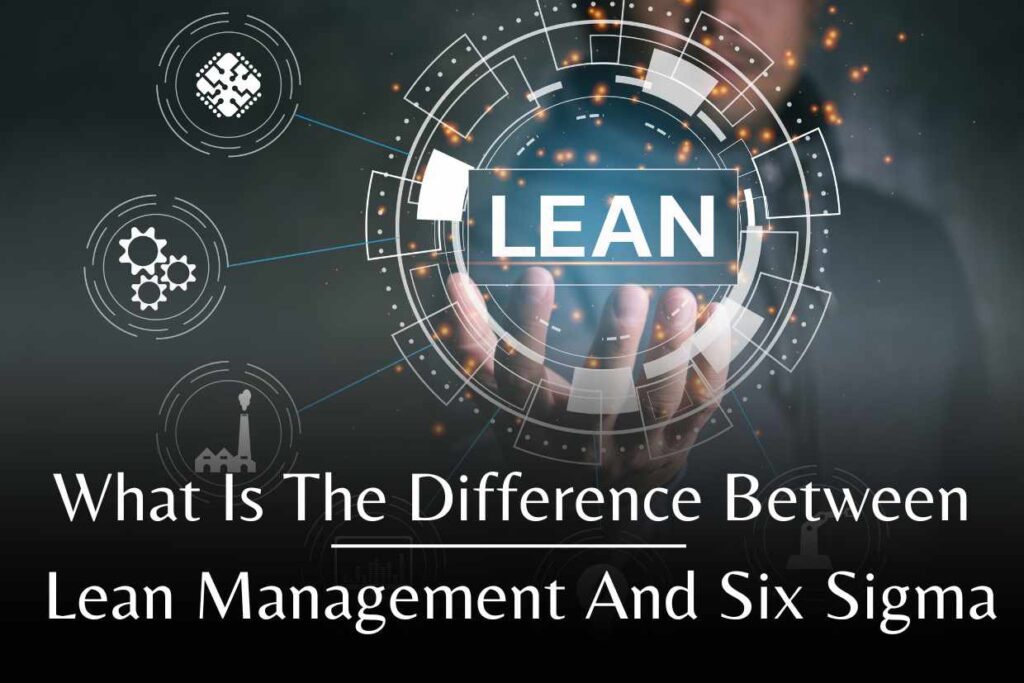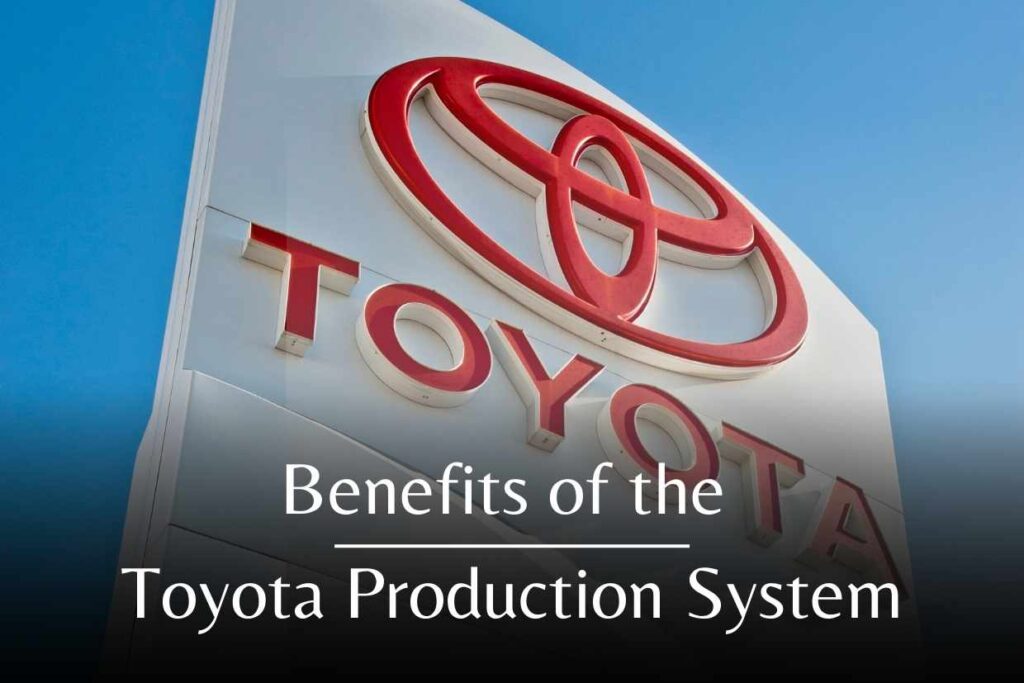One of the major ongoing debates in the business world is to choose which is the best methodology between Lean Management and Six Sigma methodologies to implement in businesses. Yes, undoubtedly, there is a difference between Lean management and Six Sigma because even though they have the same end goal of creating efficient work processes while eliminating waste, they take different approaches to achieving these goals. Before discussing the difference between Lean Management and Six Sigma, let’s see the major principles in both Lean Management and Six Sigma and how these concepts are executed in businesses.
What is Lean Management?

Lean management is a long-term philosophical approach that focuses on continuous improvement and efficiency through small, incremental changes. It seeks to eliminate any waste of time, effort, or money. It is a methodology that aims to remove any part of the process that does not bring value to the customer.
What are the Principles of Lean Management?
There are five major principles of Lean Management that will make it easy to understand the methodology of Lean management thoroughly.
1. Identifying the Value
This principle is designed to do what every company desires by satisfying customers with a product or service after understanding their needs on an individual basis. Then, simply adding value that corresponds to the customer’s wants and needs will suffice. The first principle is to identify what value the company needs to deliver to satisfy shareholders. After that, the company can move on to satisfying other business goals.
2. Value Stream Mapping
1. Value
In Lean, value is defined through the eyes of the customer. Therefore, anything that adds value to the customer, anything for which a customer is willing to pay, is known to be the value in Lean Management.
2. Value Stream
A value stream is the sequence of actions an organisation takes to provide value to customers in the form of products or services. It encompasses everything from how materials are sourced and processed to customer service policies and procedures, all the way down to delivering the final product or service quality.
3. Value Stream Mapping
The process of defining and depicting the steps involved in bringing a product or service to market is known as value stream mapping in Lean Management. This procedure helps identify where resources are being consumed, how they’re being utilised, and what results have been achieved thus far. As a result, it aids managers in making informed decisions about where to allocate their time and resources.
Value stream mapping can help organisations optimise the flow of value while creating a more efficient, predictable, and agile system. This process helps to identify where goods and services are being wasted or duplicated, as well as identify any potential issues with
3. Creating a continuous workflow
After mastering the value stream mapping process, each team’s workflow should remain smooth so that steps that create value are executed sequentially and with high quality. This principle ensures that valuable products reach customers steadily as possible while maintaining an appropriate level of quality.
By breaking down the work into smaller chunks and visualising its flow, you’ll be able to detect potential problems early on and avoid them causing delays or interruptions when providing a product or service.
4. Establishing a pull system
Once the flow is initiated, customers pull value from the next level of activity. In lean methodology, creating and establishing a pull system is needed to have a stable workflow that can deliver work tasks much faster with less effort.
To conserve resources, work is only pulled when there’s a demand for it. For example, a young woman goes to the coffee shop and orders chocolate milk. Then the barista prepares her chocolate milk exactly how she requested it – no additional brewing required. This happened because, at that moment, there wasn’t any customer demand for hot chocolates, so the equipment was left unused.
5. Pursuing perfection
Lean leaders seek to steer their organisation in the direction of a perfect value stream by implementing continuous improvements at every level. This approach is designed to achieve perfection while eliminating waste through small adjustments that are made over time. This principle ensures that the other four principles are followed consistently and continuously. The principles of “5S” work together with Lean management to create a successful workplace. Here are the 5S concepts and their translations into English.
- Seiri à – Organized.
- Seiton à – Order
- Seiso à – Cleanliness
- Seiketsu à – Standardization
- Shitsuke à – Discipline
Pillars of Lean Management.
There are 2 pillars of Lean, and they are Continuous Improvement and Respect for people. When used correctly, these guiding pillars help in smarter decision-making and guide companies toward turning into smarter, more productive systems.
1. Continuous improvement
Continuous improvement (Kaizen) is a way to make things better by finding ways to streamline work and reduce waste. This helps speed up the delivery of value and can lead to great results. Kaizen is based on ideas from Lean Management, and it’s used by many businesses around the world. When implemented well, Kaizen can save lots of money and make things faster and better.
2. Respect for people
The second pillar of Lean management is respecting the people and organisations that practice Lean management respects the people involved in this process, including customers, employees, and team members at all levels.
What are the wastes introduced in lean management?

Reducing waste is one of the most essential concepts in Lean manufacturing. According to lean thinking, waste is defined as something that the customer does not pay for. Therefore, it does not add value to any product, service, or feature. So getting rid of them is critical, and businesses of all sizes struggle with all kinds of exorbitant waste.
There are 8 major types of waste introduced in Lean Management.
The followings are those 8 wastes of Lean Management which are given by the acronym DOWNTIME, which stands for Defects, Over-production, Waiting, Non-utilized talent, Transportation, Inventory, Motion, and Extra processing.
1. Defects
Defects are the first waste of lean manufacturing. When products are not fit for use, defects arise, resulting in additional expenses and decreased efficiency within the process. This also causes production teams to either redesign or scrap products.
2. Overproduction
Manufacturing products before there is an indication of demand from customers is referred to as “overproduction.” This occurs most often when resources, such as workers or materials, are idle. Overproduction leads to wasteful activity on all levels. For example, large quantities of food are wasted in restaurants and retail stores because they are not consumed. Hospitals can also create excessive waste by having more beds than is necessary, as well as performing multiple redundant tasks within an office setting.
3. Waiting
Waiting can lead to wasteful behaviour when something needs to wait for the next step. Waiting can be caused by unevenness in the production process, leading to an excess of inventory and overproduction. For example, patients waiting for blood test results at a hospital are also experiencing Waiting.
4. Non-utilized talent
This waste of lean manufacturing is by far the most damaging and unimportant type of waste, often going unnoticed due to management policies that damage employees’ contributions. This occurs as a result of styles that ignore or undervalue employee potential. In manufacturing, when employees are not adequately trained and don’t have the correct tools for their job, this can lead to waste.
5. Transportation
Wastes in transportation occur when raw materials, work in progress, or finished products are unnecessarily moved. Poor office layout, too many steps involved in the process, mismatched process flow- all of which can lead to unnecessary transportation. Furthermore, a poorly designed system often causes these wastes to accumulate. Ordering supplies or products from distant suppliers when other closer options are available is an example of waste in transportation. Making the raw materials required for production easily accessible inside the factory is a way to reduce this type of waste.
6. Inventory
Inventory is a product, raw material, work in progress, or finished goods that are beyond the immediate needs of the company. This excessive stockpiling can be due to holding “just-in-case” inventories. Then they overstock themselves to avoid protection delays and end up with an unneeded inventory. However, this excess inventory often does not meet customer demand; it only makes things worse by increasing storage and deposition costs.
7. Motion
Motion waste is the unnecessary movement of people or equipment that does not contribute to the goal. This refers to movements that are unnecessarily complicated, taking up space, or being carried out in an area where it is already crowded. Motion waste can be caused by poor shop floor layout, isolated operations, or workstation congestion. Finding and accessing the materials required, having to sift through an inventory of items to find what you’re looking for, wasted mouse clicks on irrelevant screens, and multiple entries of data are all examples of unnecessary effort that could occur in a typical office setting.
8. Extra-processing
It’s an extra process that doesn’t add any value to the customer and is often one of the hardest ways to detect and eliminate. Additional processing can complicate simple tasks. His eight wastes of lean manufacturing occur when a developer overcomplicates a product, task, or process more than necessary to achieve the desired value. Whether you’re doing more work, adding elements, or taking more steps in your product or service than the customer wants. I’m thinking of finishing my work on This increases the cost of the final product.
Lean Management Certifications.

Lean management possesses broad applicability to processes within businesses of all scales as a philosophical approach because of its ability to assist in achieving their business goals in a more flourishing and sustainable way. There are lean management certifications that help to learn how to reduce waste, minimise costs, enhance productivity, and improve efficiency while systematically managing complex business processes.
Lean Management Certification is a globally recognised and respected professional credential that validates your knowledge and ability to apply Lean management methodologies practically to help you become a master of productivity.
- Certified Lean Yellow belt,
- Certified Lean Green belt,
- Certified Lean Black belt, and
- Certified Lean Master black belt
are major Lean Management certifications available to strengthen your professional journey.
What is Six Sigma?

The concept of Six Sigma was introduced by Bill Smith in 1980 while working for Motorola. He believed that getting rid of variations will be able to improve customer experience. Therefore, Six Sigma aims to reduce the time, defects, and variability experienced by processes in an organisation. It is a process improvement method that helps you to identify and fix problems in your manufacturing process.
Six Sigma gives you the tools and techniques to identify what is slowing down the manufacturing process and how to eliminate the delays, improve the processes, and fix further issues along the way. Plus, thanks to Six Sigma, you can produce a product that is free of defects 99.9996% of the time, allowing only 3.4 errors per one million opportunities. This concept of Six Sigma also increases customer loyalty toward the brand, and along with that, it also improves employee morale leading to higher productivity. Six Sigma has two major methodologies. They are DMAIC and DMATV.
What is DMAIC Methodology?

DMAIC is an acronym that stands for Define, Measure, Analyze, Improve, and Control. It is one of the most commonly used methodologies in the world. It focuses on improving the existing products of the organisation.
1. Define
This Six Sigma process starts with a customer-centric approach. In this phase, you determine what issues your company is facing, what opportunities are available for improvement, and, most importantly, the requirements of the customer. Mainly the issue is defined from the point of view of the customer. In this stage, you look at the process as a whole and determine the issues and problems with the manufacturing process.
2. Measure
In the Measure phase, you determine how the process is currently performing in its unaltered state. It prioritised the metrics of the process and apparatus that are applied in the measuring process. That is to check and figure out ways to improve the whole manufacturing process.
3. Analyse
The third phase is the phase of analysis, and in this phase, you determine the causes of the defect or variation by analysing previous data. This is to ensure that the process of manufacturing is effective and systematic in achieving the necessary goals.
4. Improve
In this phase, you make changes to the manufacturing process and ensure that the defects are addressed. Then, after identifying the relationship between the variables, you can make those changes to improve.
5. Control
In this final phase, you make regular adjustments to control new processes and upcoming performance and determine whether the changes made in the previous stage to improve are effective.
What is DMADV methodology?
DMADV is an acronym that stands for Define, Measure, Analyze, Design, and Verify. This methodology is implemented when the company has to create a new product or a service from scratch. It is also called DFSS or Design for Six Sigma.
1. Define
In the Define phase, you define the requirements of the customer based on inputs from customers’ historical data and industry research.
2. Measure
In this phase, you use the customer’s requirements to create a specification that would help to define the product in a measurable method. That is to collect data and compare them with the specific requirements.
3. Analyze
In the analysis phase, you analyse the product to determine whether are any other potential ways to achieve the desired results effectively. Plus, the areas in need of improvement are figured out and tested.
4. Design
In the design phase, a new process or new product is designed based on the learnings from the analysis phase. Then, the analysis phase is repeated based on the new design, and further changes are made according to the feedback.
5. Verify
In the verification phase, you have to verify whether the results meet or exceed customer requirements. Then you also should get the customer feedback and incorporate those feedback into future designs.
Difference between Lean management and Six Sigma
Lean management is a long-term philosophy that is focused on reducing waste to improve efficiency and productivity. This concept was first originated in Japan and developed by the Toyota motor production company in the 1990s. Six Sigma has stressed the importance of reducing time, defects, and variability in processes to increase the quality of the customer experience. It was developed by Motorola in the United States of America in the 1980s.
Lean management is a flow-focused approach that wants to eliminate waste in the manufacturing processes. At the same time, Six Sigma is a problem-focused approach that aims to eliminate variations in the manufacturing processes. Lean management is based on visual models, whereas Six Sigma is based on statistics and mathematical models. Implementation of Lean Management will help in improving the consistency of the output from a process; on the other hand, implementation of Six Sigma will help to reduce the flow time that an operation will take to complete a particular task.
Final note
Lean management focuses on eliminating waste, while Six Sigma focuses on eliminating variations in the processes. However, despite the difference between Lean Management and Six Sigma, both these methodologies work for the betterment of the business. Therefore, implementing any of Lean management and Six Sigma or even both of these methodologies will positively impact your business, providing you with flourishing results.




